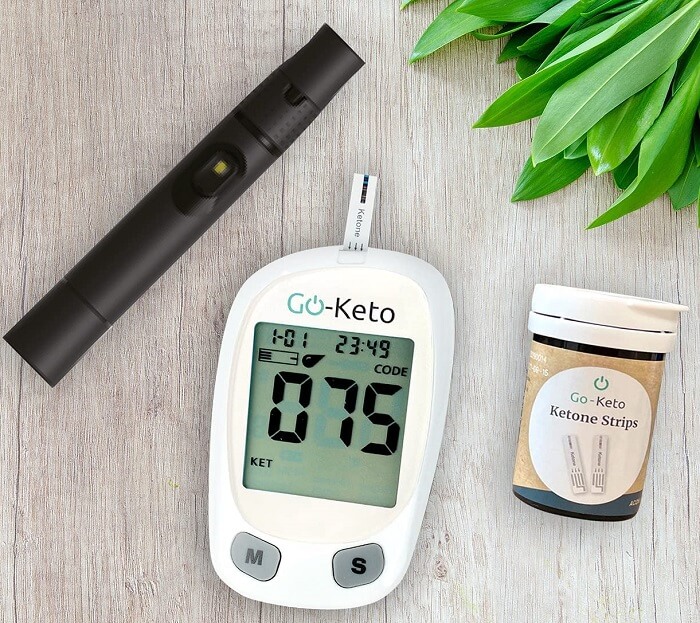In the context of a ketogenic diet, the so-called "ketosis measurement" becomes important. But what is it about? Many begin this journey without paying attention to this fundamental aspect that determines the success of the journey.
So let's find out why you need to measure ketosis and how to do it to get immediate and safe answers.
Ketosis and ketone bodies
The ketogenic diet is known for the concept of ketosis. Let's remember that it is a state that is activated in the body when our body can no longer find glucose reserves and must therefore use those of fat to produce energy. This is how ketones, or ketone bodies, are produced, which are the engine of ketosis.
What are they for? Their goal is energy production. They arise from the breakdown of fats within the liver and then travel to every part of the body to do their job.
Specifically, they are of three types:
- Acetone
- Acetoacetate (AcAc)
- Beta-Hydroxybutyrate (BHB)
During the ketogenic diet it becomes really important to measure them because they allow us to understand if ketosis is active and what is the number of operational ketones at that given moment. In this way it will be easier to understand if the approach with the keto diet is correct or needs to be revised with some tricks.
How is ketosis measured?

The three molecules mentioned above must be measured using specific instruments that quantify their number inside the body. Obviously you have to be sure you burn fat, otherwise the number will be minimal and therefore also the progress in the keto path.
Fortunately, measuring ketosis is an easy process to perform (even at home) and does not require a very long time. Here's how to measure the three types of ketone bodies:
- Acetone is measured with the breath test;
- Beta-hydroxybutyrate (BHB) is measured with a blood test;
- Acetoacetate (AcAc) is measured by urine test.
Of course you can follow a ketogenic diet even without carrying out this measurement, but having full awareness of your body and knowing how it is reacting to the path is an excellent method to motivate yourself to move forward with more grit and determination, or alternatively to understand your mistakes and fix it before wasting precious time.
Ketosis measurement: the breath test
To measure the level of Acetone the breath meter is used. It consists of an instrument capable of establishing the amount of ketones starting from breathing. In fact, you have to place it in your mouth and take a deep breath. But there are precise instructions to follow because if it is not performed correctly the values could be unbalanced and therefore unreliable.
This is why this is the least used of the three tools for measuring ketosis. Its advantages are practicality and speed: it can practically be used anywhere and at any time of the day. But we also have to deal with its cons: if the length and intensity of the breath are not equal and coordinated, a valid measurement is not obtained. So you need to know how to use it well to make it an ally in the diet.
Ketosis measurement: the blood test
The most reliable measure of ketosis is certainly the blood test. You don't need to go to an analysis laboratory, but you can also easily do it at home. All you need is the tool that you can also buy online.
How to use? It requires a small puncture on the finger which allows a drop of blood to come out from which the measurement of ketone bodies is obtained. As you can guess its biggest advantage is accuracy. It's also super fast and really easy to use.
But there is a con that must be evaluated before choosing this meter: it is quite expensive as you have to buy the measuring device and then the test strips separately. And we add that it is not suitable for those who do not like needles!
Ketosis measurement: the urine test

The most used in the measurement of ketones is the urine test. Using it is in fact very intuitive and simple: you have to urinate on the sticks to measure ketosis and wait for a variable time ranging from 15 to 40 seconds and which depends on the type of test purchased. Then you must read the legend found in the instructions to understand the level of ketones in the body.
So it's fast, cheap and simple to use. Yet it must be noted that it may not even be reliable. This is because it only measures the ketone bodies excreted in the urine and is therefore mainly recommended in the very early stages of the ketogenic diet. Then, as the body gets used to fat, it is better to change the method and use the device that allows you to measure ketones with a blood test.
Which meter to buy? Guide and advice
Ketosis measurement remains an added value in the ketogenic diet to acquire greater awareness of one's path and how the body is reacting to it.
But you also need to understand how to best use these tools and which one is right for you. For example, if you prefer an instrument that provides a numerical value, you should go for the blood test or the breath test, as the urine test entrusts the result to a range of colors. And then it is natural that the pros and cons mentioned above must be carefully analyzed and ask yourself: how much do you want to spend? How long do you want to use it? Can you stand finger pricks frequently?
Apparently they seem trivial questions, but in reality they can help you make accurate investments and buy the device that's really right for you.
And finally, some useful tips:
- Nutritional ketosis is active if the ketone level is between 0.5 and 3 mmol/L;
- A good measurement allows you to better manage your power supply;
- The devices are very useful at the beginning, then when ketosis is reached they can be used less frequently or only when making dietary changes;
- There is no limit to the measurements: they can also be done more than once a day;
- They are not invasive tests and do not involve contraindications or side effects.
So it's up to you to choose the most suitable meter according to your needs and goals. If you want you can also use them simultaneously, but there is the risk of confusion and panic because there is no correspondence between the values obtained.
In any case, the advice of your nutritionist can also be useful, who will be able to direct you towards the right choice for your path and above all in relation to the phase of ketosis you are going through.




